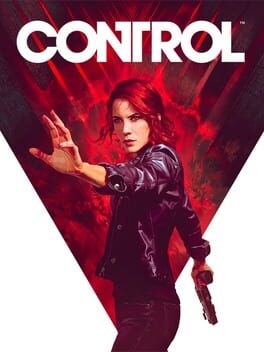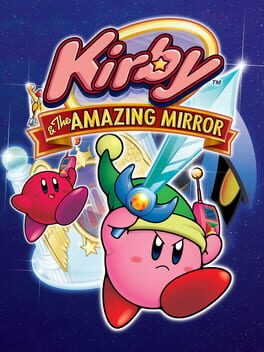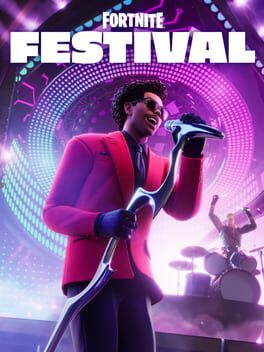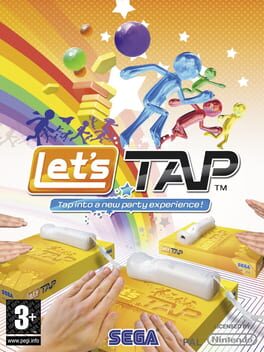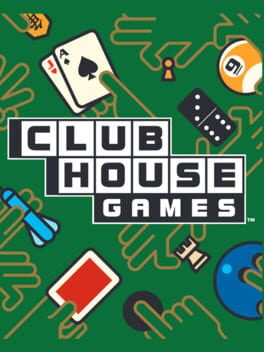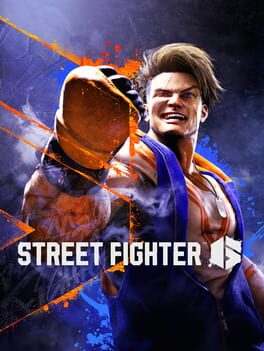AbramBuehner
26 reviews liked by AbramBuehner
Miitomo
2016
Pikmin 3 Deluxe
2020
Control
2019
remedy by way of ubisoft lol,, rlly just very dry and boring in a way remedy never is,, idk if a studio like that should have a budget like this. feels so modern triple a game core fucking bloated game w like infamous games tier combat which who was rlly clamoring for that to come back in style,, lame confusing interconnected map. idk missing all the style and swag that prev remedy games had esp in regards to its main character, max and alan instantly recognizable and at least partially sympathetic,, they seem real and human even w tech that was obv more limited. but jesse never once felt human to me,, feels like modern superhero movie quippy girl and that’s just so boring to me. and why is she a girl what specifically about her is so diff from max or alan or rlly any video game character that is oh so sad oh so tragic,, blank slate ahhh character..idk shit is boring I bounced off after five hours. remedy asleep at the wheel frfr and house of leaves seems like infinite jest for ppl that suck even more somehow. on that pseud type shit. zzzzzzzzz
If a proven formula and iterative design principle are the backbone of a successful franchise, then experimentation and creative digressions are the life blood which keep a series intriguing and innovative. The simplified platforming fundamentals of the Kirby series were established with his introductory title on the Gameboy, which was then immediately innovated upon with the introduction of his iconic copy abilities in his second game on the NES. Subsequent games continued to refine on these basic gameplay principles, with such inventions as animal companions and fused abilities being at the forefront of later entries. But it’s with Kirby & the Amazing Mirror, however, we can observe our first true digression for the series. The straightforward level-based progression of prior titles is turned on its head for this GBA outing, replacing the comfortable structure of the established formula for a more open and adventurous approach to completion. Over the years, the term “Metroidvania” has been designated as the most accurate term to describe the style of gameplay exhibited in Amazing Mirror: a side-scrolling platformer set within a large, interconnected world, with progression designed around gated areas unlocked via collected powerups. With the myriad abilities Kirby has access to throughout his adventures, along with the flexible nature of the series’ level design functioning within a more connected setting, it’s no wonder how well this structural deviation suits the familiar philosophies of Kirby’s typical adventures. The only surprise, then, is just how naturally this new approach fits within the established ethos of familiar Kirby gameplay, and how satisfying it feels to get lost in the labyrinthian escapades of this finely-polished excursion.
A vast playground of interconnected spaces is not Amazing Mirror’s only innovation for the series, though. As is heavily depicted on almost all the advertising and art for the game, Amazing Mirror is built around its functionality as the first Kirby game capable of cooperative multiplayer for the main game. With or without the companionship of up to three additional friends, you have a total of four distinctly colored Kirby’s embarking on this journey, free to explore the sprawling map of the Mirror World without restriction from the other players—a feature even most modern multiplayer games can’t implement. The likelihood of having four people with the game and the requisite link cables to all play together was quite slim back in the day, but the capability alone was impressive for the time. The gameplay itself doesn’t particularly suffer from relying on the computer-controlled partners. They more or less bumble around the world independently of you, neither helping nor disrupting anything, but are constantly available for you to call to your position from anywhere on the map, which is most useful when tackling each area’s required boss fights. It’s not the most elegant feature from a single-player perspective, but it’s quite evident that the intent was always to prioritize multiplayer functionality for this mechanic, which has been made all the more feasible thanks to the online implementation of the game on Nintendo’s online services. But whether you’re playing by yourself or with a handful of friends, the cooperative feature of the game is occasionally handy, and more importantly, integral in evolving facets of the series’ core appeals.
The majority of those inherent appeals are retained and refined for the series’ seventh major entry, capitalizing on the beautiful sprite work implemented for Kirby's Nightmare in Dreamland on the GBA and expanding its assets further with the introduction of new enemy types and several new copy abilities to go with them. Combined with all the returning abilities, Amazing Mirror offers more than 25 different power sets to play with, many of which offer useful utility through either enhanced movement or the ability to open certain passageways. While there are certain abilities that simply offer less value than others, the balancing is such that most of the time your preference will come down to personal playstyle, as the objectively best abilities are made to be rare, typically locked behind a mini boss encounter. Some personal favorites include Hammer and Sword, for their continued functionality when swimming, Burning and Wheel, for their fantastic mobility and satisfaction to use, and UFO, for being insanely powerful and clearly the best ability of the bunch. A close second, though, is the new ability Smash, which is obtained from a bout with Super Smash Bros. antagonist Master Hand, who logically gifts Kirby with all the powers of his Super Smash Bros. moveset. It’s a really fun cameo, and the various powers you get offer the most interactions with progression roadblocks to boot. I suppose that’s not unexpected, though, when you consider that almost every significant obstacle is cleared by either the smashing power of the hammer or cutting power of the sword.
It seems like something of a missed opportunity, that the majority of powers aren’t actually able to help you with progression throughout the game. As previously mentioned, most areas you need to access usually can be opened with the Hammer ability, or perhaps more commonly, Burning to blaze through similar block barricades. Most of the abilities commonly available to you don’t actually assist in progression in any way, because the actual obstacles implemented for progression are so limited. The game is also littered with one-way passages as another means to block off certain paths for progression. While not inherently problematic, the sheer number of these passages, combined with the inability to know you can’t go back until after you’ve gone through the doorway, can often lead to some frustrating situations. If you’ve managed to locate the map for the particular region you’re in, you can see one-way passages marked on there, but there will definitely be times where you’re wandering blind searching for the room with the map, caught in a series of dead end loops and cycles that spit you back at the beginning with no new knowledge gained of how to progress. By far the most regrettable component of Kirby & the Amazing Mirror is its poor map design. It’s still functional in that the information it provides is invaluable in navigating your way through the eight distinctive areas and all the confusing passageways you need to access to wind your way through them all, but the layout is needlessly obtuse, sometimes indicating a pathway forks to the left, when in reality the doorway is located in an upper corner on the right side of the room. Fortunately, there’s a number of easy ways to regain your bearing should you ever get lost, including a number of bridging pathways that connect you to other sectors, as well as an always-accessible function to return to the main hub where you can quickly travel to any of the sectors you’ve managed to connect via interlinking mirrors.
These few drawbacks and slightly underrealized potential shouldn’t overshadow the ambition and overall success of the game, though. It cannot be overstated how innovative the multiplayer implementation for this title is, regardless of how practical the actual execution of it was at the time. The functional capability of independent, cooperative exploration of the vast interconnected map in Amazing Mirror supplies a far more rewarding foundation for a multiplayer experience than the majority of comparable side-scrollers. Again, even if you play the game without actual companions, the overall experience is not hindered. Kirby & the Amazing Mirror is still a fantastically realized and thorough experience outside of its heavily advertised new feature, thanks mainly to the other major component that distinguishes it from previous Kirby titles. While comparisons to the Great Cave Offensive from Kirby Super Star have been made, Amazing Mirror offers a more robust realization of the premise that smaller title first introduced. The numerous abilities available to play with remain a joy, especially as the world you explore feels more like a playground than ever before. The convoluted layout of the world is perhaps a bit too obtuse, but it does engender a welcome element of challenge Kirby games typically lack. Functionally, navigation becomes a puzzle you need to solve to complete the game, and while the tools you use to find these solutions can occasionally be subpar, ultimately, they get the job done. Amazing Mirror excels thanks to the simple charms and baseline accessibility it maintains as part of the wider ethos of the Kirby series as a whole. However, it’s the innovative distinctions that make it genuinely special, splicing together the proven qualities of the series with amenable design principles divergent from the norm of similar platforming titles.
A vast playground of interconnected spaces is not Amazing Mirror’s only innovation for the series, though. As is heavily depicted on almost all the advertising and art for the game, Amazing Mirror is built around its functionality as the first Kirby game capable of cooperative multiplayer for the main game. With or without the companionship of up to three additional friends, you have a total of four distinctly colored Kirby’s embarking on this journey, free to explore the sprawling map of the Mirror World without restriction from the other players—a feature even most modern multiplayer games can’t implement. The likelihood of having four people with the game and the requisite link cables to all play together was quite slim back in the day, but the capability alone was impressive for the time. The gameplay itself doesn’t particularly suffer from relying on the computer-controlled partners. They more or less bumble around the world independently of you, neither helping nor disrupting anything, but are constantly available for you to call to your position from anywhere on the map, which is most useful when tackling each area’s required boss fights. It’s not the most elegant feature from a single-player perspective, but it’s quite evident that the intent was always to prioritize multiplayer functionality for this mechanic, which has been made all the more feasible thanks to the online implementation of the game on Nintendo’s online services. But whether you’re playing by yourself or with a handful of friends, the cooperative feature of the game is occasionally handy, and more importantly, integral in evolving facets of the series’ core appeals.
The majority of those inherent appeals are retained and refined for the series’ seventh major entry, capitalizing on the beautiful sprite work implemented for Kirby's Nightmare in Dreamland on the GBA and expanding its assets further with the introduction of new enemy types and several new copy abilities to go with them. Combined with all the returning abilities, Amazing Mirror offers more than 25 different power sets to play with, many of which offer useful utility through either enhanced movement or the ability to open certain passageways. While there are certain abilities that simply offer less value than others, the balancing is such that most of the time your preference will come down to personal playstyle, as the objectively best abilities are made to be rare, typically locked behind a mini boss encounter. Some personal favorites include Hammer and Sword, for their continued functionality when swimming, Burning and Wheel, for their fantastic mobility and satisfaction to use, and UFO, for being insanely powerful and clearly the best ability of the bunch. A close second, though, is the new ability Smash, which is obtained from a bout with Super Smash Bros. antagonist Master Hand, who logically gifts Kirby with all the powers of his Super Smash Bros. moveset. It’s a really fun cameo, and the various powers you get offer the most interactions with progression roadblocks to boot. I suppose that’s not unexpected, though, when you consider that almost every significant obstacle is cleared by either the smashing power of the hammer or cutting power of the sword.
It seems like something of a missed opportunity, that the majority of powers aren’t actually able to help you with progression throughout the game. As previously mentioned, most areas you need to access usually can be opened with the Hammer ability, or perhaps more commonly, Burning to blaze through similar block barricades. Most of the abilities commonly available to you don’t actually assist in progression in any way, because the actual obstacles implemented for progression are so limited. The game is also littered with one-way passages as another means to block off certain paths for progression. While not inherently problematic, the sheer number of these passages, combined with the inability to know you can’t go back until after you’ve gone through the doorway, can often lead to some frustrating situations. If you’ve managed to locate the map for the particular region you’re in, you can see one-way passages marked on there, but there will definitely be times where you’re wandering blind searching for the room with the map, caught in a series of dead end loops and cycles that spit you back at the beginning with no new knowledge gained of how to progress. By far the most regrettable component of Kirby & the Amazing Mirror is its poor map design. It’s still functional in that the information it provides is invaluable in navigating your way through the eight distinctive areas and all the confusing passageways you need to access to wind your way through them all, but the layout is needlessly obtuse, sometimes indicating a pathway forks to the left, when in reality the doorway is located in an upper corner on the right side of the room. Fortunately, there’s a number of easy ways to regain your bearing should you ever get lost, including a number of bridging pathways that connect you to other sectors, as well as an always-accessible function to return to the main hub where you can quickly travel to any of the sectors you’ve managed to connect via interlinking mirrors.
These few drawbacks and slightly underrealized potential shouldn’t overshadow the ambition and overall success of the game, though. It cannot be overstated how innovative the multiplayer implementation for this title is, regardless of how practical the actual execution of it was at the time. The functional capability of independent, cooperative exploration of the vast interconnected map in Amazing Mirror supplies a far more rewarding foundation for a multiplayer experience than the majority of comparable side-scrollers. Again, even if you play the game without actual companions, the overall experience is not hindered. Kirby & the Amazing Mirror is still a fantastically realized and thorough experience outside of its heavily advertised new feature, thanks mainly to the other major component that distinguishes it from previous Kirby titles. While comparisons to the Great Cave Offensive from Kirby Super Star have been made, Amazing Mirror offers a more robust realization of the premise that smaller title first introduced. The numerous abilities available to play with remain a joy, especially as the world you explore feels more like a playground than ever before. The convoluted layout of the world is perhaps a bit too obtuse, but it does engender a welcome element of challenge Kirby games typically lack. Functionally, navigation becomes a puzzle you need to solve to complete the game, and while the tools you use to find these solutions can occasionally be subpar, ultimately, they get the job done. Amazing Mirror excels thanks to the simple charms and baseline accessibility it maintains as part of the wider ethos of the Kirby series as a whole. However, it’s the innovative distinctions that make it genuinely special, splicing together the proven qualities of the series with amenable design principles divergent from the norm of similar platforming titles.
The only Mario game I've ever played that I consider actually bad is Lost Levels. People talk about NSMB2 like it stands along side it as the lowest of the low Mario games. After replaying it after like 11 years, this is one of the best games ever made of course. It's a Mario game, only Lost Levels is bad. 2.9 average Score? Seriously? This is just more Mario levels, and that is all I need in life.
I want to get it's biggest flaw out of the way, It is very derivative to a fault. Probably the most unoriginal Mario game ever made. This is why people rate this so low, and it's definitely not a good thing, but it does have its own fair share of new level mechanics as well, not to mention the main coin mechanic.
The Levels are what makes these games so great. Even if these games are so derivative, the Levels are designed so well and are made specifically for you to have fun. The star coins are well placed in the levels as well. Nintendo just does 2D Level design so well.
Music is what I found to be the most unoriginal. I swear the OST is just straight up from NSMB Wii. Note for Note, I swear it's the same. It still slaps but damn, can't you make it at least a little different?
World Maps were also derivative as hell. Just same old NSMB stuff. They still looked great, just felt like I had seen them before, just in a different font.
I love the art style of this game, and the NSMB games in general. Though I believe NSMB2 has the worst background art of all the other games, It all still looks great.
This game was so unbelievably easy. The coin mechanic allows you to easily get hundreds of lives, and with the tanuki suit, you'll rarely die as it is. The Mini Bosses and Main Bosses were also very easy. I wish it was harder, as that would be a way to separate it from the others, though I know Nintendo was marketing towards a younger and more casual audience with these games.
I wanna mention the Bosses again, the Mini castle bosses are very mediocre. Just so easy to beat, and it's literally the same thing every time, just slightly harder with each world. The Main Castles actually had some pretty cool mechanics involved in the Boss fights, and I've always really liked the Koopalings anyway. The Final Boss, Bowser, was pretty awesome, and my 2nd Favorite in the NSMB series, besides NSMB Wii. He was fairly easy, but very cinematic and a nice conclusion. I also really loved the Credits after beating Bowser, I thought they were pretty damn cool.
To touch on the Coin Mechanic one last time, it is pretty cool, but I feel they could have done it so much better. Maybe don't make it so 100 coins give you 1 life, make it like 300. Probably should've had Wario as the main villain, that would have been pretty awesome. Just felt like they could've done a lot more, though it was still a lot of fun.
Though It is so very derivative and unoriginal, often to a fault, this is a 2D Mario game, so It's just a great fun time. I've always loved these games, and I will continue to do so. If you want a fun platformer, or you like playing games in general, I recommend NSMB2.
Score: 4.1/5
Letter Grade: A-
I want to get it's biggest flaw out of the way, It is very derivative to a fault. Probably the most unoriginal Mario game ever made. This is why people rate this so low, and it's definitely not a good thing, but it does have its own fair share of new level mechanics as well, not to mention the main coin mechanic.
The Levels are what makes these games so great. Even if these games are so derivative, the Levels are designed so well and are made specifically for you to have fun. The star coins are well placed in the levels as well. Nintendo just does 2D Level design so well.
Music is what I found to be the most unoriginal. I swear the OST is just straight up from NSMB Wii. Note for Note, I swear it's the same. It still slaps but damn, can't you make it at least a little different?
World Maps were also derivative as hell. Just same old NSMB stuff. They still looked great, just felt like I had seen them before, just in a different font.
I love the art style of this game, and the NSMB games in general. Though I believe NSMB2 has the worst background art of all the other games, It all still looks great.
This game was so unbelievably easy. The coin mechanic allows you to easily get hundreds of lives, and with the tanuki suit, you'll rarely die as it is. The Mini Bosses and Main Bosses were also very easy. I wish it was harder, as that would be a way to separate it from the others, though I know Nintendo was marketing towards a younger and more casual audience with these games.
I wanna mention the Bosses again, the Mini castle bosses are very mediocre. Just so easy to beat, and it's literally the same thing every time, just slightly harder with each world. The Main Castles actually had some pretty cool mechanics involved in the Boss fights, and I've always really liked the Koopalings anyway. The Final Boss, Bowser, was pretty awesome, and my 2nd Favorite in the NSMB series, besides NSMB Wii. He was fairly easy, but very cinematic and a nice conclusion. I also really loved the Credits after beating Bowser, I thought they were pretty damn cool.
To touch on the Coin Mechanic one last time, it is pretty cool, but I feel they could have done it so much better. Maybe don't make it so 100 coins give you 1 life, make it like 300. Probably should've had Wario as the main villain, that would have been pretty awesome. Just felt like they could've done a lot more, though it was still a lot of fun.
Though It is so very derivative and unoriginal, often to a fault, this is a 2D Mario game, so It's just a great fun time. I've always loved these games, and I will continue to do so. If you want a fun platformer, or you like playing games in general, I recommend NSMB2.
Score: 4.1/5
Letter Grade: A-
Fortnite Festival
2023
yeah, its pretty kinda nothing right now, but im really hopeful for the future of this mode if they keep supporting it, having primarily controller support concerns really hinders the beatmaps, but the pull up notes are neat and adds a little to what the two sided beatmap style lacks, pretty easy to anyone familiar to rhythm games, but needs to be accessible to newcomers and fortnite's sperm aged user base, dont understand pricing discontentment when its about $5, same as rockband before, and you get 4 different beatmaps, but yeah as the songlist grows and stuff gets more complex in a couple years this'll be clean, i mean, we have announced instruments
The controls work about 60% of the time, but that's okay because the game seems to not care if you don't succeed or not because it's constantly giving you items and power ups to excuse your failure. What this leads to is a game that plays like it should be frustrating and full of friction, but is actually just a garishly colorful hour-long romp with screechy voice acting. If the game wasn't so forgiving it would be worse, but I was able to breeze through it and see the last true rhythm game from the creators of PaRappa and Vib Ribbon in just about an hour.
It's interesting that it happened, but it barely works and there's really nothing to it.
It's interesting that it happened, but it barely works and there's really nothing to it.
This is... my favorite racing game ever. The sense of speed is on the level of F-Zero, as you blast through the surprisingly beautiful tracks using your liberally available boost, jettison off of a ledge and get 10 seconds of air time. The tracks become little more than a suggestion as you soar above them and perform tricks, with a sense of fluidity and momentum unmatched by other racing games. The variety offered by the in-race mini games constantly keeps things fresh, and is a bending of the genre like I've never seen. One moment you'll be gliding through the air collecting butterflies, rail grinding like Sonic, shooting darts, throwing pies, or scoring goals, all of which flow with the momentum of the race.
It runs and looks great, has a ton of content, brings fresh ideas to the genre and offers a sense of spectacle that few games have. A true blooded Wii classic here that goes IMPRESSIVELY overlooked, probably because it's successor, Excite Truck, is the worst launch game.
It runs and looks great, has a ton of content, brings fresh ideas to the genre and offers a sense of spectacle that few games have. A true blooded Wii classic here that goes IMPRESSIVELY overlooked, probably because it's successor, Excite Truck, is the worst launch game.
Let's Tap
2008
Clubhouse Games
2005
Barely works as a video game, especially in the stamp mode. All of these card games that make up over half the game lineup not only feel and look the same, but are so reliant on luck that it becomes an exercise in patience and willpower to slog through minutes-long games that boil down to "flick the stylus once every 60 seconds while you wait for the CPUs to finish their turns, and hope that luck goes your way".
Atrocious game, genuinely one of my least favorite ever. At least the box art is cool.
Atrocious game, genuinely one of my least favorite ever. At least the box art is cool.


